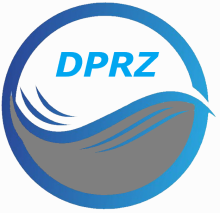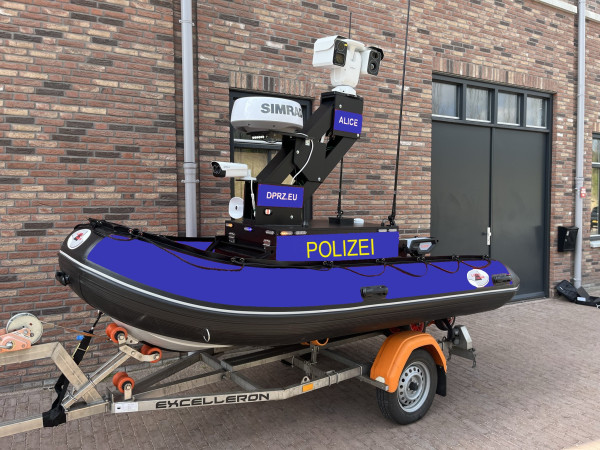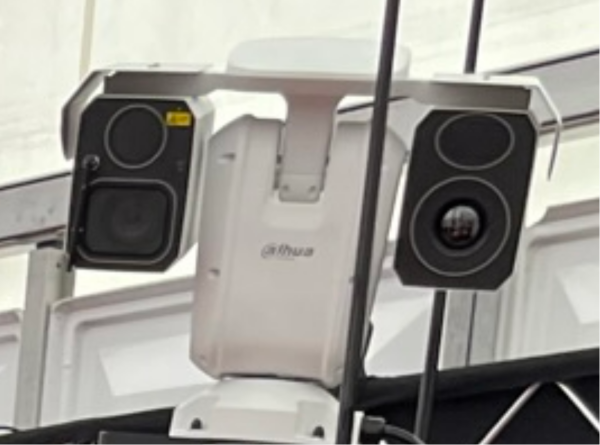Dieperzicht
Standnr: E78

Innovation on the water: The autonomous boat “ALICE” from DPRZ
The maritime world is undergoing a transformation with the rise of autonomous ships. One striking example is the autonomous boat “ALICE” (A Livesaver In Case of Emergency ) developed by DPRZ. In this article we tell you more about the world of “ALICE”, the technology behind this innovation and the impact on the rescue world.
The Pioneers of DPRZ
To understand the story behind “ ALICE” , we must first understand the organization behind this innovation. We will zoom in on the history and mission of DPRZ.
The founder of Dieperzicht (DPRZ) is Guido Steijaert . With a background in ICT and more than 30 years of experience, he switched to the nautical world in 2012. He had been working with sonar for years as a hobby. In the nautical world he was initially mainly active in sales. But I soon discovered that there was a need for knowledge sharing in the field of sonar among emergency services.
Education and training
In 2015, a start was made on training for fire brigades, rescue brigades and water boards. The focus was on understanding how sonar works in theory and how it can be applied in practice. If possible, we do the practical training in the user's own waters so that they get a feeling of what the underwater world looks like in their own area. And in many cases these are special eye-openers and objects are observed that one did not know existed before. Dieperzicht now provides training in 17 of the 25 safety regions in the Netherlands.
No time to practice
Like many things in life, only through regular practice and repetition can you maintain and further develop skills. And that's where the problem started for many emergency services. Nautical assistance and sonar in particular is only a small part of the skills that emergency services are expected to maintain on a regular basis. In addition to the training that they follow every 2 to 3 years, most students are happy that they can practice half a day a year.
A question that came to DPRZ was how we could facilitate this in one way or another. One of the first things we developed was a module that allowed us to stream the sonar images over the Internet so that a remote specialist could watch live on the sonar screen.
Shortly after this development, the COVID period started, all courses came to a standstill and there was time to think about the future. During the COVID period, DPRZ started developing a module based on Artificial Intelligence. We fed the Artificial Intelligence software with Machine Learning with many of our own sonar images. This application provides the user with a helping hand. The computer monitors the situation and provides suggestions with an associated percentage indicating the likelihood of it being a wreck, car or victim. This can also be used for detecting other objects. The user can more easily interpret the images based on what he/she has learned.
The Birth of “ALICE”
The Artificial Intelligence solution was well received at the Interschutz 2022 in Hannover. A question that arose from a large number of interested parties was whether such a solution would also be possible with an autonomously sailing boat. At the Interschutz 2022 it was decided to build an autonomous boat and to present it at the Rettmobil 2023 in Fulda . The boat had to become something more than just Toys For Boys, the boat had to fulfill a certain need.

The number of sonar specialists available is very limited. Many more people can launch a boat. If the concept could provide for the launch of a boat and a specialist who could carry out the necessary work remotely, then the mission would have been successful.
“ALICE” is built on an aluminum rigid hull inflatable boat (RIB) supplied by Lavamarine. The extra armor that Lavamarine applies to the boat makes the boat virtually unsinkable. The rubber tube provides a lot of stability and the boat does not cause any damage to the environment in the event of a possible collision.
At a time when sustainability is becoming increasingly important, we decided to equip this boat with an electric motor. The power supply is standard 10kW and can be expanded to 80kW, which is enough for an operational time of 4 to more than 24 hours. (Depending on the degree of load). If you prefer to equip the boat with a fuel motor, this is an option.
The technology in and around “ALICE” is particularly extensive, some of the technological features and highlights are listed.
- Artificial Intelligence (AI): “ALICE” is equipped with a very advanced AI system that is capable of analyzing a lot of data and making decisions based on this information. This allows the boat to cope with changing conditions and avoid obstacles.
- Advanced Sensors: The boat is equipped with a large number of sensors, some of these sensors are AIS, lidar , radar and VHF. These sensors collect information about the boat's environment, such as the position of other ships, weather conditions and the depth of the water.
- Camera: In addition to the camera for sailing the boat, ALICE also has a 360-degree rotating thermal camera. With this camera it is possible to recognize swimmers and recognition of sources of fire is also one of the possibilities, more about this later.
- Sonar: Recognition and interpretation of sonar images (G-SAR).
- GPS and Navigation: "ALICE" uses advanced GPS and navigation systems to accurately determine its location and plan its route. This allows the boat to navigate autonomously, reach waypoints and optimize its trajectory. The GPS can be expanded with RTK (Real Time Kinetic ), which allows the boat to determine its location with an accuracy of a few centimeters.
- Communication systems : The boat is connected to a shore station. This connection can be made with WiFi , 4G/5G and with satellite communication systems. In addition, there is also AIS and Maritime radio available so that communication with other vessels is possible. The system is designed in such a way that it can also run via the infrastructure of your own organization.
- Antennas : For optimal communication, the use of good antennas is essential. In the Netherlands and Belgium, a good 4G/5G connection is almost self-evident. In Germany we discovered that this is more difficult outside the highways and cities. Good hardware in combination with Poynting antennas provides 4G/5G connections in many places where a normal mobile phone has no connection.
- Self-correcting Systems: “ALICE” has systems that can maintain its stability and safety in different weather conditions. These systems can, for example, adjust the rudder position to compensate for waves and wind.
Autonomous sailing
In general, safety and regulation in autonomous sailing are vital to ensure that autonomous ship operations are safe for crews, passengers, other ships and the environment. A number of important aspects of safety and regulations for autonomous sailing:
1. Safety systems : “ALICE” is designed to do everything possible to avoid collisions. For this purpose it uses the available sensors.
2. Emergency stop systems : The boat is equipped with an emergency stop system, in the event of unforeseen situations the boat switches itself off or goes into standby mode.
3. Cybersecurity : Through VPN connections or use of the user's networks, outsiders are excluded and there is a secure connection between the operators and boat.
4. Training and Certification : Operators of our vessels must be trained in the use of autonomous systems and must have the required certifications to ensure they are competent in handling these technologies.
5. Safety protocols : There should be clear safety protocols and procedures for emergencies and rescue operations. Our concept currently assumes that at least 1 operator has a direct view of the boat.
Innovation on shore
Our innovation of the shore station also has a history, otherwise we would not have been able to realize all this in one year.
In 2019, DPRZ became involved in a missing person on the IJsselmeer. Men from the Nijkerk fire brigade who had been trained by DPRZ in the field of sonar were undergoing sailing training at that time. The police were looking for the victim, the fire brigade passed by, spoke briefly with the police, offered their help and continued with the sailing training. (This may sound strange to the German reader. In the Netherlands it is organized in such a way that the fire brigade searches for a missing person on the water in the golden hour (first hour after the loss) and that it then becomes a task for the police)
In the evening we received a number of sonar images from the fire brigade asking whether this could possibly be the victim. We had a strong suspicion that this was the case and the next morning we went looking and searched with our own sonar. We soon found the victim just below the surface of the water.
The 112 report we made then surprised us. The central reporting station asked us for a street address. There was nothing you could do with a GPS coordinate.
This was a signal to us that there was still room for improvement in emergency care for incidents on the water.
A proof of concept was created within Dieperzicht (a test), which made it possible to coordinate an incident on the water based on a map. Technically this was successful, but organizationally it was difficult to implement with 25 safety regions due to the bureaucracy.
Building blocks from the above system have been used to develop the sonar recognition system (G-SAR), which can also be fully used as a navigation system. And the ALICE control software.
Sonar recognition
The sonar recognition system is designed in such a way that it requires minimal user interaction. The system can be connected to almost any brand of sonar. As long as the sonar has an HDMI or other video output.
There are only a few buttons that control the entire screen. It is automatically indicated whether an object has been detected. The user can take a screenshot of this and use this print to record a marker on the map and if there is a connection with a command post, both the coordinate and the screenshot are sent to the command post. If multiple boats are active, this will also be shared with the other boats.
By opening the menu you get an overview of the detected objects and you can view them again and share them if necessary.
The software contains many options, it is our job, together with the administrator, to maintain simplicity in operation so that the end user only has available what is needed and can focus on his or her task without having to worry about the technology that lies behind all the possibilities.
Controls of ALICE
The boat can be controlled in different ways. Ranging from an X-Box controller, an extensive ship controller, tablet or PC. In addition, there are a number of industrial controllers that are supported.
Through Artificial Intelligence, ALICE can be made aware of its sailing area. Every time ALICE is on the water, it collects all types of information and translates it into a total picture. This means that safe and unsafe waters are known and that these situations are responded to in a timely manner.
Control can be done from several places. It is comparable to sailing on a larger ship. The skipper, navigator, sonar operator, camera operator and/or other sensors can operate simultaneously. But with our autonomous boat solution, you don't necessarily have to sit next to each other.
There can only be 1 skipper at a time. The system is configured for safety in such a way that the skipper on location can always override everything because he/she has a view of the boat.
to the boat's operating screen as to the sonar. It is our job, together with the administrator, to keep the screen as simple as possible so that the user can focus on his or her task.
Various search patterns can be offered to help ALICE search for someone missing in the water. The basic patterns are sector search, parallel search and expanding square. In addition, your own search patterns can be applied if desired.
Also Camera with Artificial Intelligence

ALICE is full of Artificial Intelligence, we do not want to leave the camera functionality for detecting swimmers and potential drowning people undiscussed. The thermal Dahua cameras with day and night vision can be set to look around up to 360 degrees. The models we developed enable the camera to visually recognize people in water up to a distance of 750 meters. And with the thermal camera up to 350 meters.
This application is not only usable from the boat, but can also be used to support a lifeguard. This includes observing dangerous areas with strong currents.
Product range
The current boat is based on a 3.5 meter RIB, which is available up to a length of 6.2 meters. A standard basic configuration is used, which can be configured based on customer wishes for the task to be performed.
Future developments
In addition to the fact that the current concept continues to improve due to Artificial Intelligence and our innovations, we will certainly introduce 2 more new models in the near future.
One of the new models will be a 5.2 meter rubber boat with a fixed aluminum hull (RIB). In addition to being autonomous, this RIB can also be sailed in a conventional manner, although the steering is somewhat futuristic and less conventional. This also provides us with a bridge to adapt existing boats for autonomous sailing.
In addition to a RIB, there is also a comparable boat made of hard plastic (HDPE). This is based on market demand.
More information: